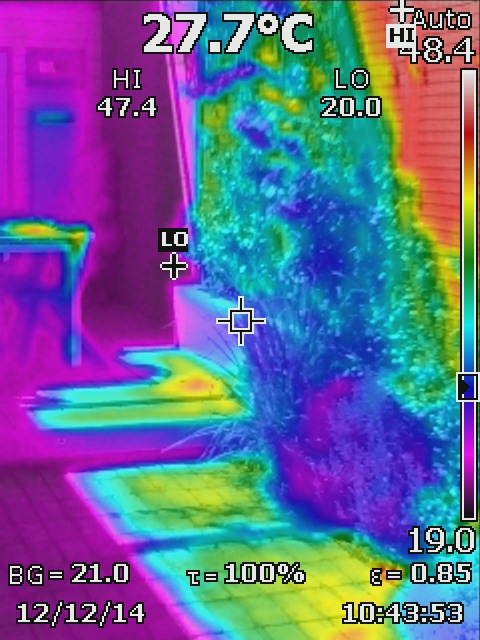Early in the summer, I had the chance of running a thermal imaging camera through one of the Billabong Houses, to 'view' the thermal range within the internal spaces and across different components of the house, eg the walls, glazing, frames etc.
After the some initial amusement from its resemblance to The Predator's heat-vision of its victims (from the 1980s movie of the same name) you can see how the camera allows you to view the range of temperatures in the frame; the highest temperature (HI) and the general range colour coded.
These images below (from friend Scott who hired the camera to test on his new eco-home) show where ceiling insulation was detected missing there, the last image around a light fitting.
The following are some images taken within the Billabong House with a regular photo beside it for orientation. In the first example notice how the heat outside is visible through the half open door and how the 'Low-E' glazing cuts out transmission of the infra-red heat to inside.
The next image of the lounge room shows the narrow temperature range inside, the window locations being easily distinguishable.
Here the positions of the timber studs are clearly visible behind the wall face - no missing insulation here! Again, the roof windows showing only minor variation in temperature from the surrounding surfaces.
The final image is of a detail of the green wall adjacent the deck area - a much larger temperature range is detected, but interesting of note that the vegetation of the partly grown green wall is shown to be significantly cooler than the surrounding surfaces; this will have some effect on cooling the local micro climate to an area with doors and a large area of glazing and will continue to improve as the green wall gets covered and the vines on the pergola over continue to grow.
